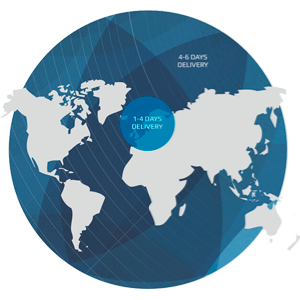Rising consumption fuels robust recovery of global poultry market

One of the main drivers of the poultry market recovery is the growth in poultry consumption. Poultry is favored by consumers worldwide due to its affordability, nutritional value, and versatility in preparation. Unlike red MEAT, poultry is often perceived as a healthier option, which aligns well with the growing HEALTH consciousness among consumers.
In regions such as Asia and Africa, where population and income growth are significant, demand for poultry has increased significantly. For example, in countries such as CHINA and India, the middle class is rapidly expanding, leading to increased disposable income and a shift to a protein-rich diet. Consequently, poultry consumption in these countries has increased sharply, which has contributed significantly to the recovery of the global market.
The poultry industry has also benefited from technological advances and increased production efficiency. Innovations in breeding, feed formulations, and disease control have increased the productivity and sustainability of poultry production. These advances not only reduce costs, but also improve the quality and safety of poultry products, making them more attractive to consumers.
Additionally, automation and data analytics in the poultry industry have streamlined operations, allowing producers to scale their operations efficiently. This has resulted in a more stable supply of poultry products even during periods of increased demand, thereby stabilizing prices and stimulating consumption.
Trade policy and market access have also played a key role in the revival of the global poultry market. Many countries have entered into trade agreements that facilitate the EXPORT and import of poultry products. For example, the United States , Brazil , and the European Union are major poultry exporters, and their access to international markets has greatly contributed to the development of the poultry industry.
Efforts to remove trade barriers and standardize regulations have opened up new markets for poultry products. Countries that previously imposed restrictions due to health concerns or protectionist policies are now more open to poultry imports, further stimulating global demand.
Despite the positive trends, the poultry market faces a number of challenges. Feed prices , driven by the cost of grain and oilseeds, remain a major concern for producers. In addition, outbreaks of diseases such as avian influenza can disrupt supply chains and affect market stability.
Sustainability is another important issue. The environmental impact of poultry production, including greenhouse gas emissions and water use, is under close scrutiny. Producers are increasingly adopting sustainable practices to address these issues and meet the expectations of environmentally conscious consumers.
The global poultry market is expected to continue its growth trajectory in the future . The growing global population, coupled with rising urbanization and income levels, is likely to support demand for poultry. Moreover, continued advances in production technology and efforts to improve sustainability will further strengthen the industry’s prospects.
The recovering global poultry market, driven by rising consumption, technological innovation and improved market access, presents a promising outlook for the industry. While challenges remain, the resilience and adaptability of the poultry sector suggest that it will continue to play a vital role in feeding the world’s growing population. As consumers increasingly prioritise health, affordability and sustainability, the poultry industry is well positioned to meet these needs and drive the next stage of growth in the global food market.
Read together with it:
- Боливия экспортирует говядину на сумму 797 миллионов долларов и вводит новые цифровые сертификаты для внешней торговлиЭкспорт говядины из Боливии в период с 2021 по 2025 год достиг 797 миллионов долларов. Китай является основным рынком сбыта этого мяса, на который приходится 74% продаж, сообщила Карина Серрудо, генеральный директор Национального таможенного управления. Параллельно с этим ведомство включило сертификат безопасности экспортных пищевых продуктов для говядины в систему «Единое окно для внешней торговл...
- Поголовье свиней в Бразилии продолжает растиТакже наблюдался рост убоя свиней на 1,2%, достигнув рекордного уровня в 2024 году, хотя рост сектора замедлился. Экспорт свинины также достиг исторического максимума. По географическому распределению Толедо (штат Парана) сохранил лидерство по производству свинины среди 5487 муниципалитетов, где ведётся свиноводство, на долю которого приходится 2,2% от общего поголовья (95......
- Bloomberg узнал о плане G7 значительно ужесточить санкции против РоссииНовый пакет санкций будет включать меры, в частности, против энергетики, финансов и военной промышленности, а также крупнейших нефтяных компаний России. Разработку пакета G7 планирует завершить в октябре, выяснил BLOOMBERG Страны «Большой семерки» (G7) приближаются к соглашению о значительном ужесточении санкций в отношении России, сообщает агентство Bloomberg со ссылкой на проект заявления. «Мы с...


